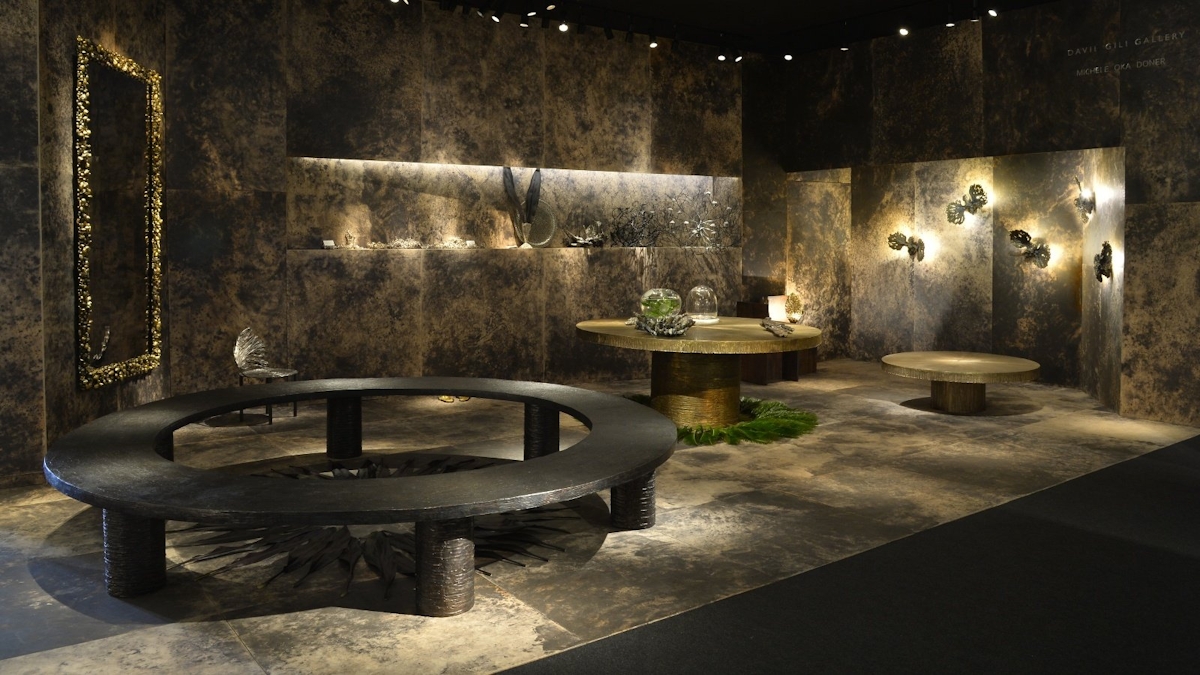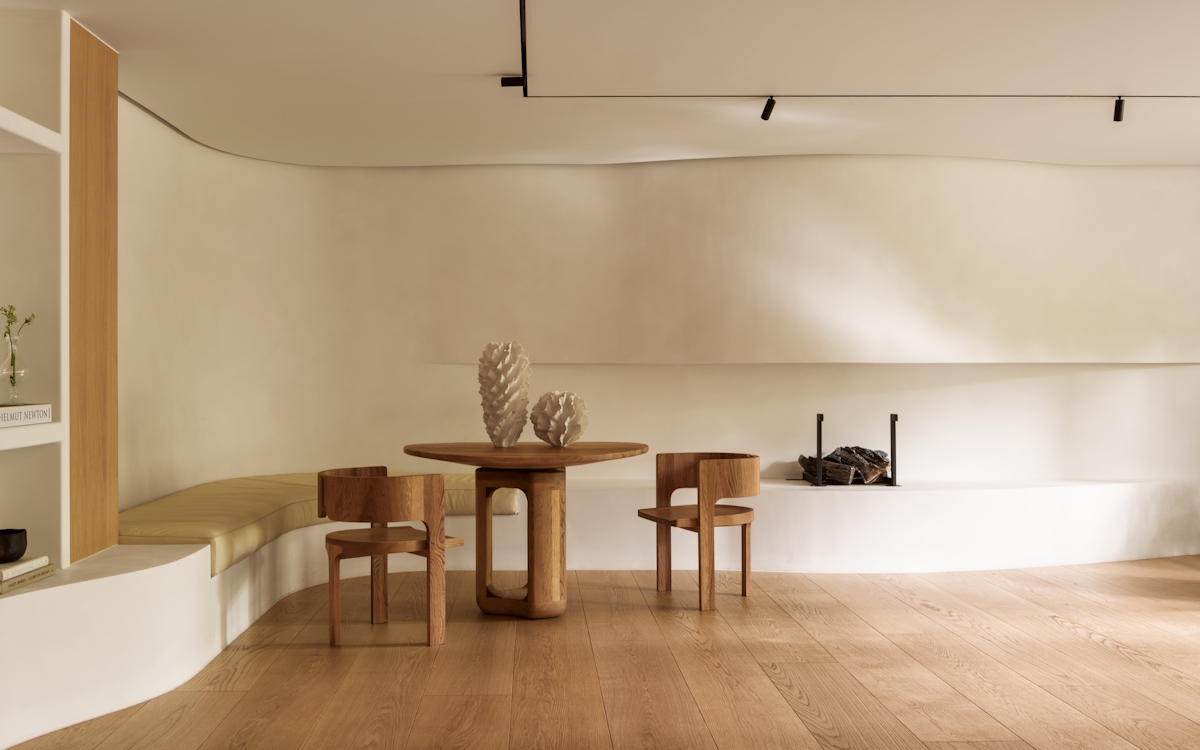Brutalist interior design – the unique mid-20th-century design movement with a “don’t-mess-with-me” attitude and heavyweight supporters – has divided opinions for decades, potentially drawing more criticism than any other style of recent centuries.
An evolution of the French “béton brut” (meaning “raw concrete”) – Le Corbusier’s definition of his favourite material – the term was made popular by architecture critic Reyner Banham in the 1950s and 1960s. With it, he hoped to encapsulate the newly emerging architectural style borne of post-Modernism and (at least in Britain) the post-World-War-II years.
Despite fierce opposition, Brutalist Interior Design has come to be known as one of modern design’s most difficult styles to date – giving it a timeless quality enjoyed by none other. Case in point, Michele Oka Doner‘s Radiant Disk table and Ice Ring bench (seen here at PAD London; available at David Gill Gallery) which are as transformative as they were 20-plus years ago. (above)







